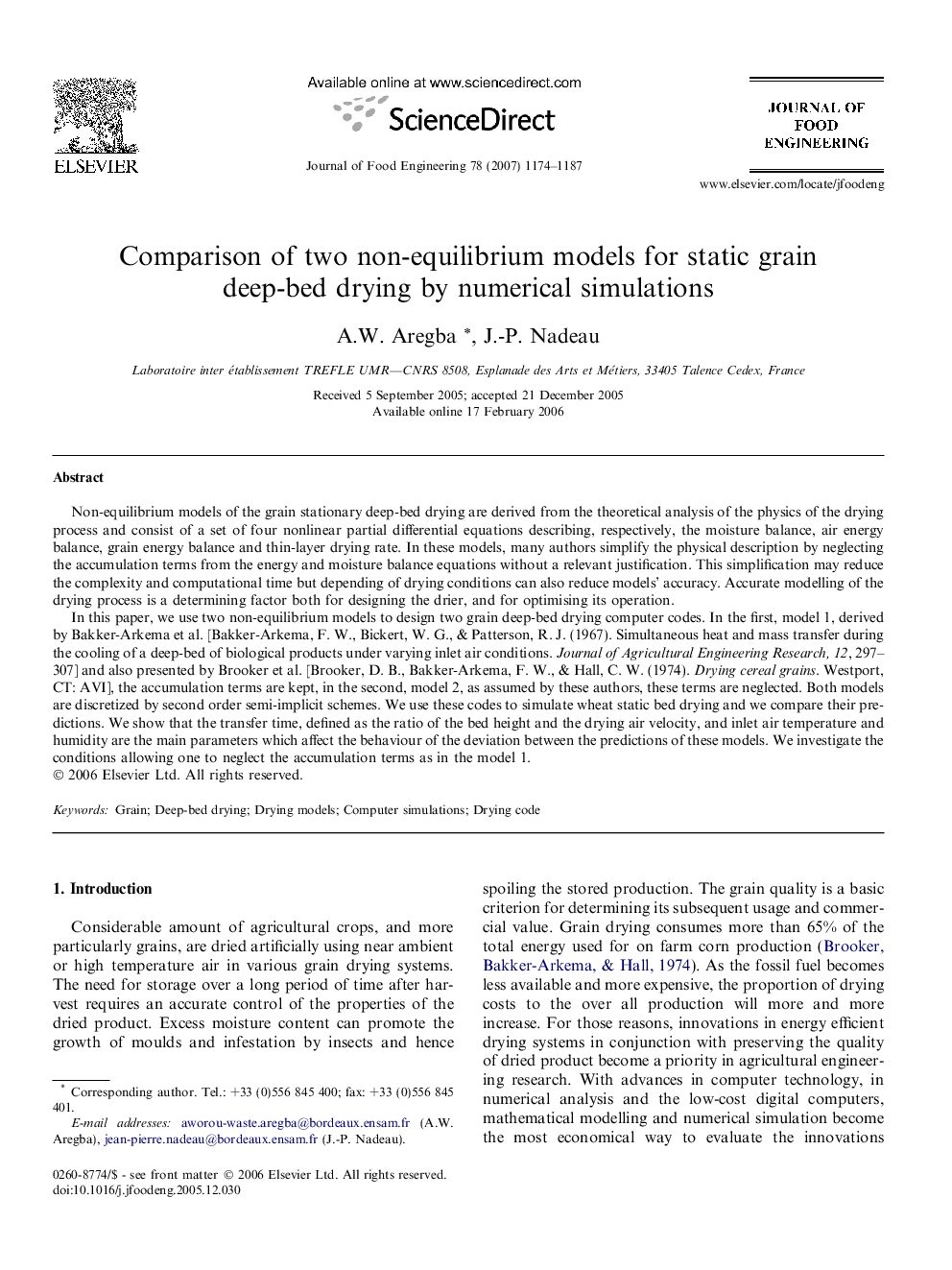| Article ID | Journal | Published Year | Pages | File Type |
|---|---|---|---|---|
| 226385 | Journal of Food Engineering | 2007 | 14 Pages |
Non-equilibrium models of the grain stationary deep-bed drying are derived from the theoretical analysis of the physics of the drying process and consist of a set of four nonlinear partial differential equations describing, respectively, the moisture balance, air energy balance, grain energy balance and thin-layer drying rate. In these models, many authors simplify the physical description by neglecting the accumulation terms from the energy and moisture balance equations without a relevant justification. This simplification may reduce the complexity and computational time but depending of drying conditions can also reduce models’ accuracy. Accurate modelling of the drying process is a determining factor both for designing the drier, and for optimising its operation.In this paper, we use two non-equilibrium models to design two grain deep-bed drying computer codes. In the first, model 1, derived by Bakker-Arkema et al. [Bakker-Arkema, F. W., Bickert, W. G., & Patterson, R. J. (1967). Simultaneous heat and mass transfer during the cooling of a deep-bed of biological products under varying inlet air conditions. Journal of Agricultural Engineering Research, 12, 297–307] and also presented by Brooker et al. [Brooker, D. B., Bakker-Arkema, F. W., & Hall, C. W. (1974). Drying cereal grains. Westport, CT: AVI], the accumulation terms are kept, in the second, model 2, as assumed by these authors, these terms are neglected. Both models are discretized by second order semi-implicit schemes. We use these codes to simulate wheat static bed drying and we compare their predictions. We show that the transfer time, defined as the ratio of the bed height and the drying air velocity, and inlet air temperature and humidity are the main parameters which affect the behaviour of the deviation between the predictions of these models. We investigate the conditions allowing one to neglect the accumulation terms as in the model 1.
